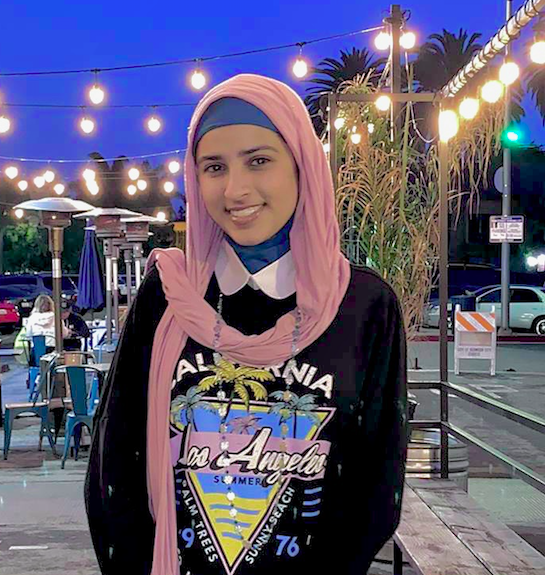High school student Sidrah Siddiqui wears a head covering, called a hijab, as part of her Islamic faith. It’s the start of uncomfortable conversations and awkward stares.
“Aren’t you hot in that?”
“So what happened to your hair?”
“Your parents made you wear it, huh?”
“But you were prettier with your hair out…”
“How come you’re always covered?”
These are some of the questions and statements I’ve received since I started wearing my hijab. I wore my hijab before starting high school, the summer before 9th grade. I figured that with a fresh start in a new environment, the timing couldn’t be better. I saw some students from my middle school and their shocked stares said it all.
Since my “trial run” of wearing the hijab at my summer class, I had expected their reactions. But I didn’t process what the hijab would mean with how others would perceive me. The moment I put on my hijab I began to feel differently. Sure I had worn the hijab before for when I pray and go to the masjid, but I never wore it among people who weren’t dressed like me.
As I took a deep breath and walked through the gates of my school I felt beady eyes narrow and scan me like an X-Ray. The same thing happened when I walked into Safeway. And Baskin Robbins. And pretty much every public place I entered. Their eyes would linger from mine to my hijab immediately. And that’s when I’d see it. The subtle change in their features. Their eyes would hold pity and their smiles would be still. And if they had two cents to put in, they’d add a condescending remark, too.
Can’t a woman dress modestly because she chooses to? Can’t a girl cover her hair if she chooses to? Can’t a person follow their religion if they choose to? And why is it that when we choose to express ourselves with our freedom of religion we are labeled as oppressed but when Billie Eilish, mega popstar, chose to dress in baggy clothes to avoid judgments on her body, she received praises? Her style is game-changing and trendy and should be applauded. So why is my hijab some form of oppression?
Female empowerment stems from women wearing what they want. But somehow, it concludes when it comes to Muslim women who wear the hijab. Because now they’re not empowered and instead are viewed as “powerless.” But let the world know, we aren’t. Rather, we are headstrong and emboldened in how we dress because we know what it represents — faith.
With a Perspective, Sidrah Siddiqui.
Sidrah Siddiqui attends Daugherty Valley High School in San Ramon.
